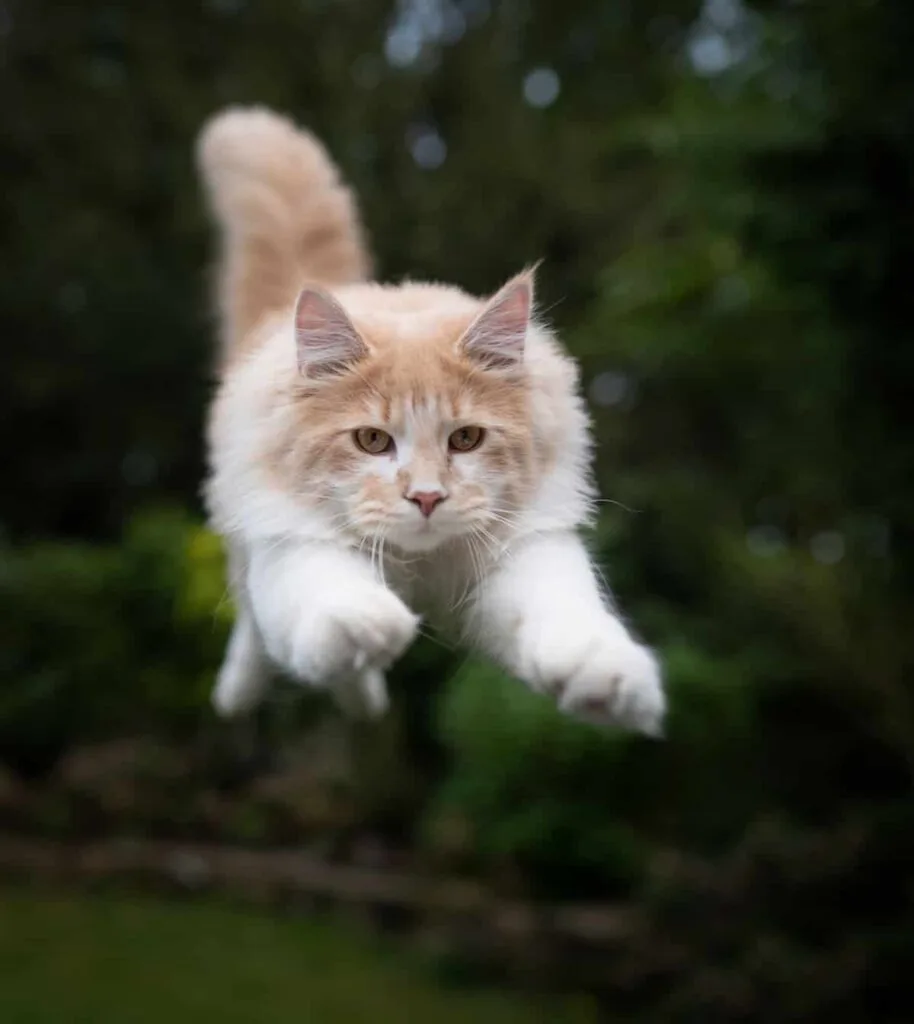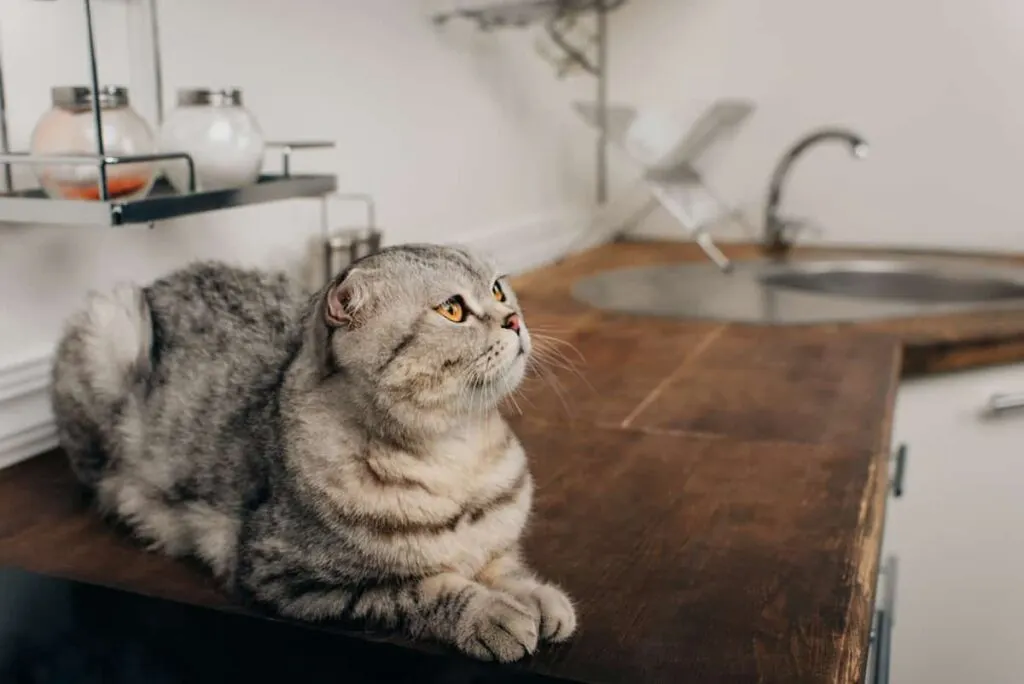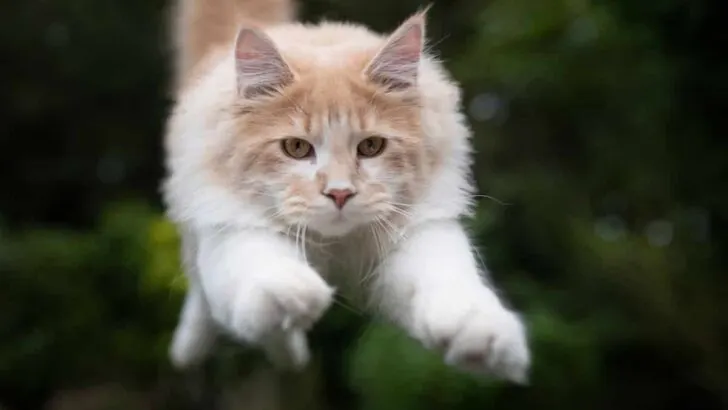One of my favorite things to do is watch my cat jump all over the house. It seems no matter how high the surface; he knows just the right calculations and timings to always land safely. Cats are known for their incredible jumping abilities, and their ability to judge height is one of the reasons. But how do they do it? How are cats able to judge distances so accurately before they make their jump?
Researchers have discovered that cats can judge height and distance using a combination of their senses, including vision, smell, and hearing. They also have a remarkable sense of balance, allowing them to land safely after jumping.
In this article, we will explore the incredible abilities of cats and how they can accurately judge height and distance. We will look at the science behind their incredible abilities and explore some of the fascinating research that has been done on these amazing creatures

Visual Perception
Cats have excellent visual perception, allowing them to accurately judge height. This is because their eyes are positioned in a way that gives them a wide field of view and depth perception.
Depth Perception
Cats have binocular vision, which means their eyes are positioned in a way that allows them to see two slightly different images of the same object. This gives them depth perception and the ability to judge the distance between objects.
Depth perception is important for cats because it allows them to jump from one surface to another without falling. They use visual cues such as the size and distance of objects to judge the height and distance of their jumps.
Visual Acuity
Cats have excellent visual acuity, meaning they can see fine details and distinguish between shades of color. This is because their eyes have a high concentration of rod and cone cells responsible for detecting light and color.
Visual acuity is important for cats because it allows them to see prey from a distance and judge the distance between themselves and their prey. It also allows them to navigate their environment and avoid obstacles.
Overall, cats’ visual perception is crucial to their ability to judge height and navigate their environment. Their binocular vision and excellent visual acuity allow them to see fine details and accurately judge distances, which is essential for survival in the wild.

Other Sensory Information
Outside of the visual is the sensory aspect of all of this. Let’s get into how cats use hearing and their whiskers to just distance so they can land even the highest of jumps.
Hearing
Cats have an excellent sense of hearing, which they use to help them judge height. They can hear high-pitched sounds beyond the range of human hearing, which helps them detect the location of objects and navigate their environment.
When a cat jumps from a height, they use its ears to help them orient itself in the air and to judge the distance to the ground. The sound of their body moving through the air also provides important auditory feedback, which helps them adjust their movements and land safely.
Whiskers
Cats also use their whiskers to help them judge height. Whiskers are highly sensitive and are used by cats to detect environmental changes.
When a cat is jumping from a height, it will often spread its whiskers out to the sides to help them gauge the distance to the ground. This allows them to make small adjustments to their body position and to land safely.
In addition to their hearing and whiskers, cats also use other sensory information to help them judge height. For example, they use their sense of touch to feel the texture of surfaces and to detect changes in the terrain. They also use their sense of sight to help them judge distance and to detect obstacles in their path.

Instinctual Behavior
Cats have a natural instinct for climbing and hunting. These instincts are deeply ingrained in their DNA and have been passed down from their wild ancestors. Understanding these instinctual behaviors can help us understand how cats judge height.
Climbing
Cats are natural climbers. They have sharp claws that allow them to grip onto surfaces and climb up trees, furniture, and other objects. They also have powerful hind legs that allow them to jump great heights. This instinctual behavior is a survival mechanism that allows cats to escape from predators or climb to safety when they feel threatened.
When judging height, cats use their keen sense of balance and coordination. They can assess the distance between themselves and the object they want to climb and then use their powerful hind legs to jump up and grab onto the surface. Once they have a secure grip, they use their claws to climb up the surface until they reach their desired height.
Hunting
Cats are natural hunters. They have a strong prey drive and are always on the lookout for potential targets. This instinctual behavior is also a survival mechanism that allows cats to hunt for food and protect themselves from other predators.
When judging height, cats use their hunting instincts to assess their surroundings. They look for potential prey that may be hiding or lurking in high places, such as birds or rodents. They also use their keen eyesight to spot potential threats or predators lurking below.
In conclusion, cats have a natural instinct for climbing and hunting, allowing them to easily judge height. Their keen sense of balance, coordination, and hunting instincts help them navigate their environment and stay safe from potential threats. Understanding these instinctual behaviors can help us better understand and appreciate our feline friends.
Final Thoughts
So, the next time you catch your cat jumping around, take a moment to appreciate all that’s going on. I think the more you observe your cat, the better you’ll get at telling which of their instincts they’re using the most to calculate and land those jumps.
We learn more and more about our cat daily by observing him. Hopefully, you take the same interest in your cat too!

My name is James, and welcome to FAQCats!
Along with our team of cat owners, expert pet enthusiasts, and pet professionals, we aim to write engaging helpful, engaging content about cats. At FAQCats we strive to provide content that’s accurate and fun to read. Our team writes about everything related to cats; even the most complex of topics. Through extensive research and caring for our own fur-pals, we’re able to provide something cat owners worldwide will love. Have a look around, and leave us feedback anytime!

